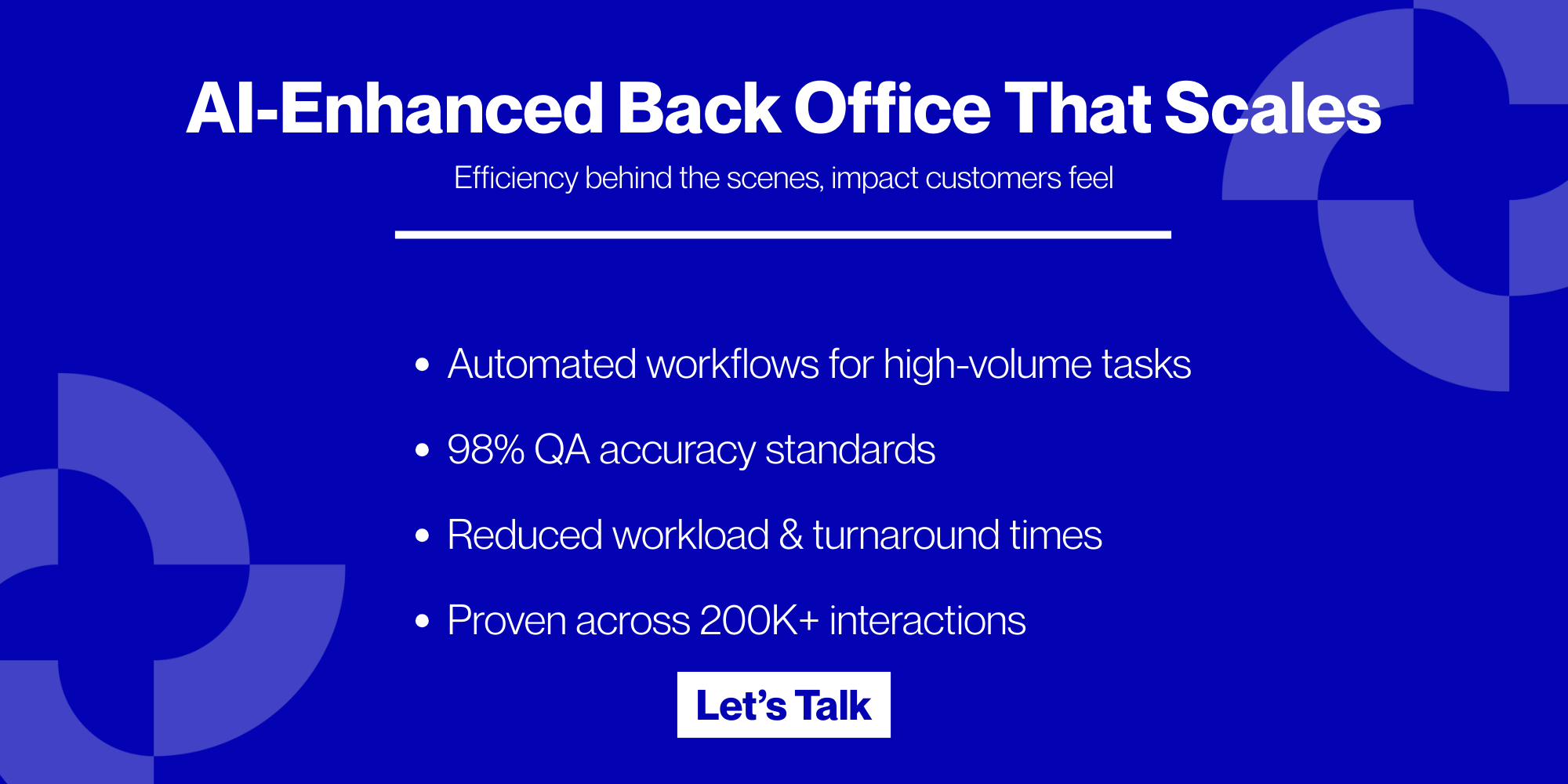Learning and Development (L&D) refers to training programs that improve employees’ skills, knowledge, and capabilities. It covers both job-specific training and long-term career development initiatives. This is why learning and development in the workplace is a critical driver for both employee and business success.
L&D is as important to a business as education is to society. It allows businesses to achieve growth by:
- Removing skill gaps
- Solving internal challenges in minimum time
- Preparing teams for the future
Studies have shown that engaged employees who receive training show a 17% increase in productivity. Ultimately, this leads to a 21% increase in profitability for the business.
Furthermore, in 2025, business leaders in consumer brands and D2C companies across the US, UK & Australia face new challenges:
- Artificial Intelligence (AI) and automation are changing job roles
- Due to the prevalence of a hybrid work culture, teams must learn new ways to work
- Younger workers want jobs that have meaning/ serve their purpose (not only offer money)
This makes L&D more important than ever in the current work environment! If you’re running a business with 5+ employees and $5M+ in revenue, building a learning culture is not optional. It’s necessary. When planning your programs, it is also worth considering how to make your customer happy and what to do to make the customer happy, since employee training directly impacts customer satisfaction.
AtiDiv’s Ideal Customer Profile (ICP) in 2025:
- AtiDiv’s Customer Experience CX services are designed for:
- Markets (Geo) – US, UK, Australia
- Industry – Consumer brands/ D2C companies
- Roles/departments – Customer Support/ Customer Experience
- Seniority Level – VP, Sr. Manager, Director
- Employee Size of the companies – 5+
- Revenue Size of the companies – $5M+
The rest of this article will explain nine clear reasons why learning and development matters and how to improve learning and development in the workplace so your business stays strong and ready for the future.
What is L&D in Business?

Through learning and development activities/ programs, businesses can build the skills of their employees. This lets them grow in their careers. Commonly, L&D includes:
- Short-term training to improve job performance
- Long-term planning to support career growth
Remember that you don’t always need to make it big! Even basic L&D efforts (like on-the-job coaching or setting skill-building goals) can make a strong impact on productivity and employee retention, something even more critical in 2025.
Even simple initiatives, such as skill-based coaching or structured onboarding, can impact productivity and employee retention.
Key Responsibilities of Learning and Development
Research shows that 94% of employees would stay longer at companies that invest in their learning. Also, several business experts accept that the most important factor in a company’s success is how strong its learning culture is.
For your reference, below are some key responsibilities your learning and development team must perform in 2025:
| Responsibilities of Your L&D Team | Explanation |
| Identifying skill gaps | Checking where employees lack the skills needed to:
or
|
| Creating training programmes | Developing learning content that closes those skill gaps. |
| Delivering training | Teaching those skills by organising:
|
| Supporting performance | Giving employees tools and resources to apply their learning on the job. |
| Tracking results | Measuring how training has improved:
or
|
| Promoting a learning culture | Encouraging continuous learning as part of daily work. |
9 Ways Learning and Development Lets You Achieve Business Success!

By investing in learning and development, you can build a skilled and motivated workforce. Also, you can prepare for long-term success and easily adapt to a changing business environment. This shows the business impact of learning and development in any industry. To gain more clarity, let’s check out the importance of learning and development in a business setup for 2025:
1. Closes the Skills Gap
Nowadays in 2025, many businesses are struggling to find people with the right skills. A report by Manpower Group says that 74% of companies are already finding it hard to hire skilled workers.
Furthermore, studies show that:
- By 2030, over one billion workers will need new skills due to AI and automation.
- Around 42% of current job skills will no longer be useful.
These changes are largely happening due to the growth of artificial intelligence. Through learning and development close gaps in areas such as CX operations, data analytics and automation management with initiatives you can identify which skills are missing and then provide training to build those skills.
For example, Atidiv helped a global client achieve 80% time savings and 99% accuracy in data processes by pairing automation with skilled human training (case study).
2. Keeps Employees Updated
In any business, in 2025 employees need to stay updated on industry trends, tools and customer expectations or methods:
- Industry trends
- Company changes
- New tools or methods
This builds confidence and supports better decision-making. Research shows that 85% of employees feel more motivated when they receive regular updates. In another survey, 80% of workers said good communication builds trust between them and their employer.
Now, please note that learning and development supports this by:
- Creating training content
- Providing learning resources
This allows employees to stay informed and prepared. CX leaders who regularly refresh employee training see fewer escalations and higher CSAT scores.
3. Promotes Ongoing Learning
Businesses must keep building employee knowledge to remain competitive. That’s because nowadays, old knowledge becomes outdated quickly! Through learning and development initiatives, you can promote a continuous learning approach instead of offering training only once.
According to Deloitte, companies with strong learning cultures are:
- 92% more likely to innovate
- 17% more likely to lead their markets
- 58% better prepared for the future
- 34% more responsive to customer needs
Thus, as a business owner, by offering regular learning, you can let your team stay sharp and deliver better results to your customers. For VPs and Directors leading customer support, ongoing training ensures teams stay sharp and aligned with customer demands.
4. Improves Business Performance
Learning and development is not just a support function! It directly contributes to business results. Studies show that around 67% of L&D professionals agree that training improves revenue.
For example,
- A Fortune 500 cosmetics company saw a 20% sales increase in areas where training apps were used.
- This clearly shows that L&D can directly increase sales and productivity.
However, on the negative side, studies show that only 8% of L&D professionals track the return on investment (ROI) of their training. As a leader, you should not make this mistake and keep tracking whether training is improving your employee’s performance. This makes it easier to see the business value of L&D.
One Atidiv client saved over $450K annually in amendment costs and reduced employee expenses by 65% through structured learning and process improvements (case study).
5. Attracts and Keeps Good Employees
Most job seekers now pay attention to training opportunities when choosing where to work. Studies show that around 92% of candidates consider L&D when deciding to accept a job.
Thus, by offering learning options, reduces attrition costs and builds loyalty, critical for consumer brands competing in global markets. Additionally, employees also stay longer when they see chances to grow. A Better Buys survey found that employees who receive development opportunities are:
- 15% more engaged
- 34% more likely to stay with the company
Thus, learning and development reduce your hiring costs and keep good talent on board.
6. Supports Hybrid and Remote Work
Today, 16% of companies across the world operate fully remotely. Also, about 83% of workers prefer hybrid work. L&D bridges gaps by aligning distributed teams with shared tools, knowledge and standards.
This shift means that all your employees are no longer working in the same location. For business owners like you, this creates a new challenge:
- Keeping both WFH and WFO employees connected
- Motivating them to perform
Learning and development overcome this issue by offering training and tools that work across locations. Beyond just video calls or chat tools, businesses nowadays invest in learning platforms, which:
- Provide ongoing training
- Allow sharing of updates
- Let teams learn together (no matter where they are)
In this way, through L&D, you can keep your remote and hybrid teams aligned and ready.
7. Encourages Healthy Competition
Competition inside a business can bring growth! Instead of unhealthy rivalries, learning and development programs promote friendly competition. For example, leaderboards and progress tracking motivate people to perform better.
Research shows that 89% of employees believe they would perform better if their work felt more game-like. By introducing a learning system with badges, ranks, or challenges, you give your employees a reason to participate and improve. Always remember that the goal is not to create conflict, but to remove skill gaps!
CX managers can use leaderboards and progress metrics to drive faster resolution times and improved CSAT.
8. Promotes Knowledge Sharing
Did you know? Fortune 500 companies lose around $31.5 billion each year because employees don’t share what they know. Poor collaboration is seen as the major reason for this failure by 86% of company leaders.
Here again, learning and development help. Structured peer mentoring and knowledge bases reduce repeat errors in customer support workflows. It lets you build systems where employees can learn from each other. For example, you can allow your employees to exchange ideas through:
- Peer mentoring
- Internal forums
- Group learning sessions
Please note that a culture of learning promotes teamwork and avoids repeated mistakes. It also speeds up problem-solving.
9. Makes Your Organisation More Innovative
Studies show that 84% of company leaders say innovation is important for growth, Learning and development encourages employees to:
- Try new ideas
- Solve problems
- Keep learning
It also gives employees the right training and safe space to take risks without fear of failure. That’s how innovation happens! Another research found that learning-focused organisations are 92% more likely to innovate.
For example, Atidiv enabled a leading aggregator to save over $20M by combining automation with well-trained human teams (case study).
L&D is Tough? Achieve Future-Ready CX With Atidiv Today!

Nowadays, learning and development is a must-have for every forward-thinking business, it is a strategic investment in customer experience success. It helps in:
- Closing skill gaps
- Boosting employee retention
- Supporting hybrid work models
It also plays a central role in long-term success. But let’s be honest! Keeping your customer support team well-trained can be overwhelming. New tools, changing customer expectations, and rising query volumes make it even tougher.
That’s where Atidiv comes in. We are customer experience specialists who provide:
- Omnichannel messaging solutions
- Social media support
- Live chat service for website
- After-hours coverage, and more
Our case studies show consistent impact from saving $1.3M for a US retailer to reducing costs by 50% for a UK client. Also, our team can easily handle large query volumes. Give your customers the experience they deserve! Outsource your customer support to Atidiv today!
FAQs on Learning & Development (L&D)
1. Why should I invest in employee training? I am already managing tight budgets.
Be aware that learning and development activities:
- Boost productivity
- Reduce chances of mistakes
- Lets your employees work faster and with confidence
Several studies show that even small investments in L&D lead to big returns. Thus, it is always cheaper to upskill than to rehire or resolving repeated errors (both cost more in the long run).
2. How do I know if my training efforts are working?
You can track improvements in:
- Employee performance
- Sales
- Customer satisfaction
- Task completion speed
Also, collect feedback from employees. If they feel more confident and engaged, your learning and development initiatives are working.
3. I don’t have a full L&D department. Can I still train my team?
Yes! In this case, you can start small with:
- Peer mentoring
- Online courses
- Basic coaching
You can also set monthly skill goals. This lets you gradually build a culture where learning becomes part of everyday work. Start small with peer mentoring, online courses or external partners like Atidiv.
4. What if my employees leave after receiving training?
There’s always a risk! But untrained employees staying is a bigger problem! Studies show that learning and development training:
- Improves loyalty
- Reduces turnover
Be aware that when employees see growth opportunities, they are more likely to stay.
5. How can I train a remote or hybrid team?
To do so, you can use digital tools like:
- Learning platforms
- Video sessions
- Chat-based knowledge sharing
Also, try to keep sessions interactive and short. With the right system and technique, remote training can be just as effective as in-person training! Atidiv provides hybrid learning and support for CX teams.

